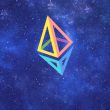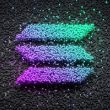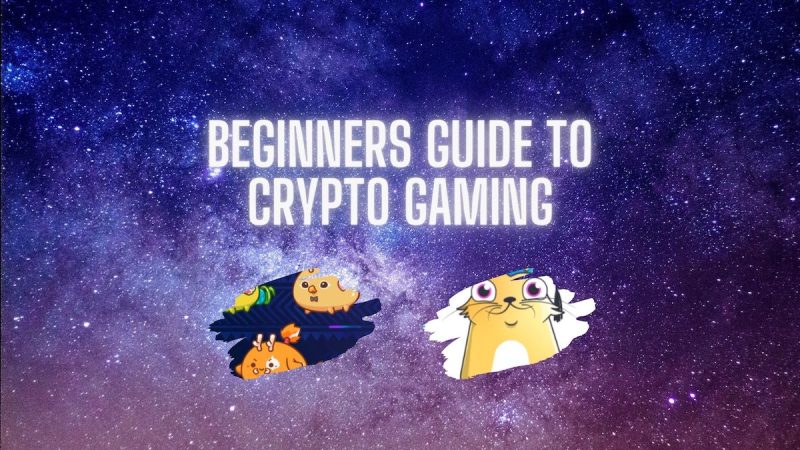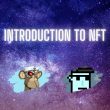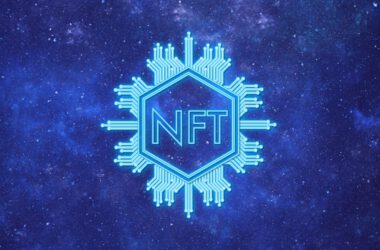In this guide, you will learn the basic technology behind play to earn games. You will learn how to allocate crypto coins and tokens, choose a platform and access a growing list of crypto games for the best experience and potential earnings. You will learn about non-fungible tokens (NFT) and how they are created, bought, or sold to generate value. You will learn about the potential blockchains that carry the best NFT games and how your assets can travel between blockchains.
The basic knowledge on wallets linking to NFT collections and games opens a universe where new projects appear almost daily and fight for popularity. You will gain access to already established games and up-and-coming play to earn economies where rarity, scarcity, skill and long-term play can build income streams.
What is Play to Earn
Gaming has become more accessible in the past few years, with a boom of free to play games building a robust user base and an estimated market size of more than $78B for the entire global market. Free to play games are a closed economy, where the initial download is free, but progress hinges on in-game purchases and possibly a specialized game token.
The one problem is that the in-game tokens cannot be swapped back to real-world assets, except informally by special arrangement with players.
Play to earn builds on top of the free to play model, but creates an open economy. The wider acceptance of cryptocurrencies has helped turn the closed economy of gaming into an open system of gaming, marketing, incentives, rewards and a mix of passive income and investment returns.
What is an NFT
Part of the answer to building an open economy is the NFT digital asset. NFT stands for non-fungible token, a blockchain record that designates a specific type of entity pointing to a unique asset. Non-fungible suggests the tokens cannot be swapped for one another as for example with Bitcoin. Each token contains specific data to point to a resource – an image, video, in-game items or another unique object. Some NFTs point to items in the real world, as a form of certification.
NFT artwork first gained attention in the spring of 2021, especially after several artists managed to sell their tokenized work for record prices, at one point worth above $50M for the collected works of an artist known as Beeple. Crypto art also boosted the value of Pascal Boyart, known for his large-scale murals in support of Bitcoin. But not only large-scale artworks gained attention – some of the most notable trading activity happened among small, avatar-like items, in collections such as Hashmasks, CryptoPunks, Bored Apes and many copycat projects.
Fungible tokens can only designate an amount or a value, and serve as currency. A non-fungible token is more like a certificate of ownership. NFT can be created on almost all blockchains, though this token standard originated with the Ethereum blockchain and is known as an ERC-721 token. Users can also encounter a BEP-721 token, which is the same type of asset, but programmed on top of Binance Smart Chain.
Owning this type of token requires nothing more than having a wallet for the right network, such as MetaMask, MyEtherWallet or another Ethereum wallet, or Trust Wallet for Binance Smart Chain.
NFT Collectibles
Beyond the technicalities, the most exciting part of NFTs are the series of collectibles. Thousands of collections exist, fighting for the top spots in value and visibility. NFT collectibles are the simplest form of value creation, where only rarity and free-market bidding allow for earning potential. Also known as crypto art, those NFT collections are the first, non-gamified tier of the open crypto economy.
NFT collections come in many formats, but they set the stage for what it means to own a unique digital asset. The token itself encodes the destination of the artwork, usually a .jpeg file on one of the dedicated servers.
Popularity is a cut-throat game for NFT collectibles, and the leading position still belongs to CryptoPunks. Number one on the OpenSea market, CryptoPunks are a peak case for scarcity, where subtle features bring out some of the Punks as rare or unique.
NFT on Ethereum
Most NFTs have been created on the Ethereum blockchain. To generate, buy or sell an NFT, a gas fee will apply to each transaction. Due to the popularity of collectibles and the potential for gaming, projects have tried to boost adoption by offering zero-fee minting or finding ways to lower the price of creation.
However, over the life cycle of the Ethereum-based NFT, gas fees may apply for listing on markets such as OpenSea, selling and switching between various tokens to liquidate the proceeds.
As of November 2021, the Ethereum network carried 22,023 smart contracts related to NFT projects and collections. Each contract has minted or transacted hundreds of times. Data on the exact number of collectible items remains incomplete, though the most active collections boast of thousands of owners.
NFT on Binance Smart Chain
Binance Smart Chain attempts to offer a more curated, accessible version to NFT owners and traders. BSC is one of the alternatives to Ethereum, and uses a system of delegate nodes to achieve lower transaction prices. The network supports several token standards, and all are accessible through Trust Wallet.
While Ethereum-based NFTs are an open market, BSC and the Binance holding offer a more organized experience, with hand-picked and promoted projects.
Binance NFT is also one of the first networks to set up the Initial Game Offering, a sale of tokens and items linked to a new play to earn game.
NFT Fees and Upfront Costs
NFT fees mostly hinge on how busy the Ethereum network becomes at a given moment. Usually, Ethereum and token transactions are cheap, but on certain occasions, buying an NFT raises gas prices to exorbitant levels. Usually, this happens when bots compete to mint new tokens and want to give priority to their transactions.
To mitigate this problem, NFT projects and games resort to different techniques. Some sell the digital tokens and items via credit card, only later sending the tokens for a smaller transaction fee.
Play to earn games may also use networks like Polygon (MATIC) to batch transactions and avoid high gas fees.
What is NFT Gaming
NFT gaming is another term for play to earn gaming. So long as in-game items are represented by non-fungible tokens, they can transfer that value to other players, and participate in multiple marketplaces.
What is DeFi
DeFi, short for Decentralized Finance, is the backbone of the play to earn business model. At the most basic, DeFi allows for financial operations and holding value through token assets, outside the regulations of the traditional financial system. DeFi is a vast field of simulated insurance, lending, banking, payment apps and automated order books, which is beyond the scope of this guide. The basic effects of DeFi for gaming is the potential to earn passive or investment income through tokenized activity.
DeFi often requires an upfront deposit of value in the form of tokens, which serves as a liquidity source for other operations. In the early days of cryptocurrency operations, trading was the leading activity, and many token owners were incentivized to dump the assets on the market. In DeFi, the chief incentive is to hold onto the assets and receive passive income or another form of rewards.
In gamified DeFi and play to earn, an upfront investment is needed to buy the initial characters and items. This approach is slightly different from free to play games, where in-game purchases are optional. But for play to earn, a basic version of MyEtherWallet, MetaMask or Trust Wallet may be needed to hold the tokens and pay fees.
What is GameFi
The idea of gamified finance appeared only about a year ago, attributed to Andre Cronje, the creator of Yearn Finance. At the time of creation of Yearn, most DeFi was about finding the best yields.
But some of the so-called yield farming projects started offering incentives in the form of badges, soon turning into full-fledged games.
Income from Play to Earn
Play to earn projects borrow from GameFi in demanding an initial deposit, boosting the game’s liquidity pool. In this section, we will look at the varied sources of income, including token rewards, returns from Initial Decentralized Offering (IDO) or Initial Gaming Offering (IGO).
What is a Reward Token
Some projects rely on a double-token strategy, while others use a single token for both deposits and subsequent rewards over time. Knowing a game’s token strategy in advance may help predict token liquidity and ways to convert the asset into another type of crypto coin as needed.
How NFT Games Generate Income
One of the ways to secure income from a new game is to participate in the initial airdrop, distribution or sale. Play2Moon will track the newest NFT games to find the best vetted offers for reward tokens and early item distribution.
NFT items have rarity as their primary quality. Rare items can be acquired through airdrops or early purchases, or generated over time through play to earn. Then, the items can be offered on marketplaces internal to the game or specific project, or to an open marketplace such as OpenSea, Binance NFT, Sorare, Rarible or another platform.
Inside the play to earn game, a player can earn both fungible reward tokens, and rare NFT drops. The fungible tokens can also be spent toward item generation or game progress, depending on the project’s structure and business model.
What are NFT Marketplaces
NFT marketplaces are a growing industry, still dominated by top centralized listing platforms. OpenSea has taken the task of vetting projects to avoid scams and worthless collection copies. Binance NFT also curates promising startups, adding a new play to earn game almost daily.
NFT marketplaces are also decentralized, as in the case of Bakery Swap, an automated token service based on BSC. However, this decentralized market complicates trading, as it requires a new asset, the BAKE token, to list and sell NFT game items and collections.
How to Buy and Sell Digital Goods in Play to Earn Games
Play to earn games can become the source of long-term income by rewarding various in-game mechanics. In the case of Axie Infinity, breeding new characters can build a portfolio for sale to new players. To achieve the breeding goal and possibly produce rare game characters, a player needs the Smooth Love Potion (SLP) token, once again requiring an upfront cost. SLP is based on Ethereum and requires an additional gas fee.
Breeding for rarity has been one of the NFT mechanics since the first project of CryptoKitties landed. The rare trait mechanism of CryptoKitties was kept a secret by the developer team, though players tried to reverse-trace some of the features to increase the chance of producing a rare digital cat.
As new games and players populate the play to earn space, each one will offer a different pathway to building income streams. But more and more projects remain bound to the immutable record and open access of public blockchains, offering global access with no limits to adoption.


